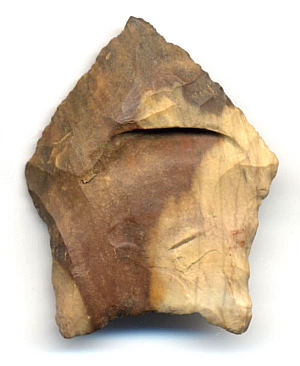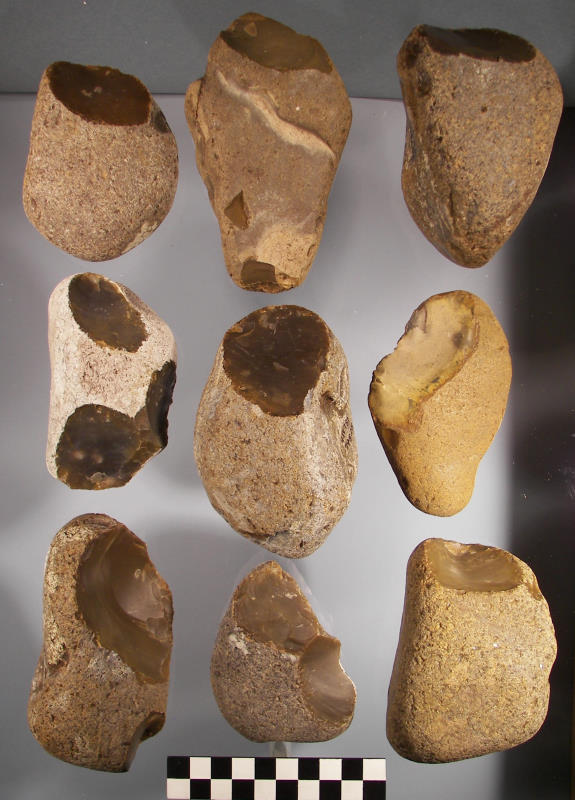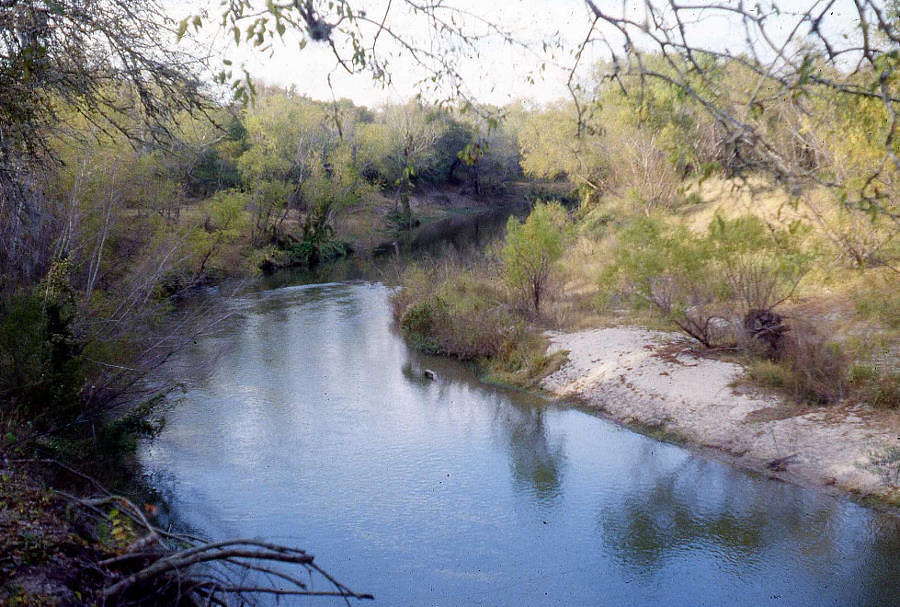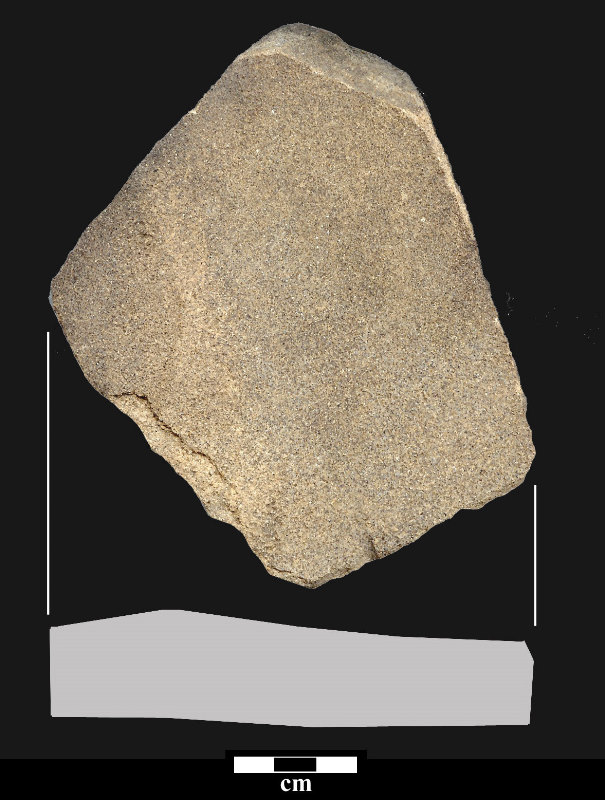River Gravels
Generally, the immediate Texas coast has very limited local sources of lithic material (stone). Exposed bedrock does not occur within 50-70 miles of the coast. The only natural sources of stone in the coastal zone are river gravels along the major rivers of the upper and central coast. In the coastal prairies and marshlands region, river gravels are typically quite small in size. As a result, aboriginal coastal inhabitants obtained lithic material from inland sources and made extensive use of bones and shells as raw materials for tool-making. Characteristically, very few lithic remains are recovered form coastal sites in comparison to inland sites and the stone tools that are found are small in size. Chipping debris—flakes, chips, and chunks—is uncommon and occurs mostly in very small pieces.
Within 50-70 miles of the coastline, siliceous rocks carried by alluvial deposition from distant lithic sources can be found in active river gravels and sometimes in ancient gravel layers exposed in the deeper valleys in the outer coastal plains. As one nears the coast, gravels are rarely accessible simply because the valleys are filled with fine-grain sediments. Such gravels that can be found 30-50 miles inland are quite small in size because alluvial deposition lacks the energy to move large lithic materials a great distance from the source. Consequently, coastal Indians had to make use of pebble-sized resources (3-5 centimeters or 1-2 inches in diameter), although they could occasionally find cobble-sized (5-25 centimeters) lithics along the larger rivers as one moved upstream, away from the coast. And Lesser quality lithic materials utilized include silicified wood (petrified wood) and sandstone.
Along the upper Texas coast, the Trinity and Jacinto Rivers drain into Galveston Bay and deposit gravels composed mostly of silicified wood, quartzites, and translucent cherts from the Willis and/or Queen City formations. The Brazos River carries similar materials in addition to Tecovas chert, which is dense and yellowish-brown to dark brown. These lithic materials usually have inclusions, or vugs, that diminish the quality of the stone. At sites east of Houston, silicified wood, mostly pebble sized was the predominant lithic material. The overall quality of silicified (or “petrified”) wood varies greatly from poor yet durable to excellent but less durable. Higher quality silicified wood is generally suitable for making thin bifacial dart points, while lower quality silicified wood would be made into heavy duty choppers, adzes, and perforators.
The redeposited ancient quartzites from the Willis and Queen City formations ultimately derive from the Ogallala Formation on the High Plains and are often known as Uvalde gravels. The material composition and size of Uvalde gravels varies according to the alluvial context. Compared to central part of the Texas coast, these Uvalde gravels are smaller in size. This gravel variation is because different rivers meander through different lithic sources with at various speeds. For example, silica grain inclusions and a smooth surface are characteristics of Ogallala quartzite, while Queen City quartzite, which may be derived from the Willis Formation, has a coarse-grained texture and individual quartz inclusions. Sometimes coastal natives used heat treatment to reduce silica grain inclusions and increase the workability of these materials.
The analysis of excavations at Eagle's Ridge (41CH252), located on the northern bend of Trinity Bay near the mouth of the Trinity River, documented changing patterns of lithic procurement during the Late Holocene. During the Middle Archaic, materials were brought in from distant sources, while during the Late Archaic and early Late Prehistoric peoples made use of smaller, less quality materials found locally. At Eagle Ridge, the earlier occupations show the use of high-quality Edwards chert found in the lower Colorado and Guadalupe river drainages some 150 kilometers (about 90 miles) to the south. Later occupations show the use of more diverse lithic materials (quartzites, silicified wood, chert pebbles) procured from the nearby Trinity, San Jacinto, and Brazos river valleys. This shift in stone sources parallels the change in technology from the larger projectiles used by the atlatl to smaller projectiles used by the bow and arrow.
In the central coast, the Colorado and Guadalupe Rivers carry larger, higher-quality Uvalde gravels from the Edwards Plateau. The gravel bars along the these rivers contained many cobbles of chert, quartzite, and other materials suitable for tool making. The Guadalupe is relatively large, powerful river with a steeper gradient than any of other rivers draining into the Texas coast. Hence, it was able to move considerable quantities of Edwards chert gravels down river, the highest-quality lithic resource of the Texas coastal zone. Like other river gravels of the region, the gravels found along the Guadalupe River, particularly in Dewitt and Victoria counties, contain lots of reworked ancient “Uvalde” gravels as well as materials derived from the Edwards Plateau in more recent times (probably Late Pleistocene). Because of these factors, Guadalupe River gravels are made up of different kinds of rocks, including chert, quartzite, and fossilized wood, as well as softer rocks such as sandstone that have traveled shorter distances.
In addition to silicified rocks used for chipped stone, coastal peoples made use of sandstone, with its rough texture useful for grinding and abrading tools. Even small fragments could be used by coastal peoples to shape bone and shell. Additionally, grooved net weights made of sandstone are recovered on the upper Texas coast. Most sandstone found in coastal sites would have been transported from inland sources.
Perhaps the most unusual type of stone material used by coastal peoples comes from the Galveston Bay area. Archeologist Lawrence Aten uncovered evidence from the Jamison and Gaulding sites near the mouth of the Trinity River suggesting that alligator gastroliths—literally meaning “stomach rocks”—may have been used as a raw material. Aten noticed a glaring discrepancy between the small number of alligator bones and much larger number of alligator gastroliths recovered from these sites. Gastroliths are pebbles that aid in digestion. Alligators are thought to purposefully consume pebble to small cobble-sized rocks from river gravel beds as a digestive aid. The alligator stomach functions as a tumbler, rounding and smoothing the rocks, which become more polished the longer they remain in the alligator's body.
Aten found many obvious or suspected gastroliths that had been “tested” with the removal of inspection flakes; presumably these were the rejects found not suitable of knapping. When Aten plotted the size-frequency distribution of these tested pebbles and found that it was almost identical to that of the recovered chipped stone artifacts. Thus, he reasoned that in the absence of workable natural stone, coastal inhabitants in the Galveston Bay area may have regularly flaked alligator gastroliths into chipped stone tools.
Sources
Aten, Lawrence E.
1983 Indians of the Upper Texas Coast. Academic Press, New York.
Aten, Lawrence E., Charles K. Chandler, Al B. Wesolowsky, and Robert M. Malina
1976 Excavations at the Harris County Boys' School Cemetery: Analysis of Galveston Bay Area Mortuary Practices. Special Publication, No. 3, The Texas Archeological Society, Austin.
Ensor, H. Blaine
1998 Eagle's Ridge: A Stratified Archaic and Clear Lake Period Shell Midden, Wallisville Lake Project Area, Chambers County, Texas. Wallisville Lake Project Technical Series, Reports of Investigations 4, Geo-Marine, Inc.
![]()
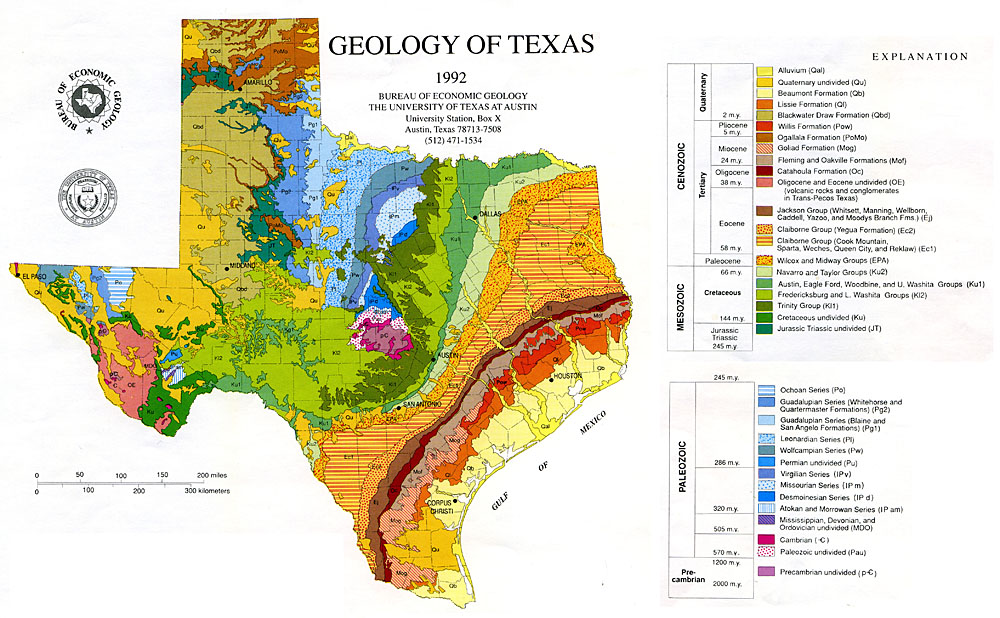
|
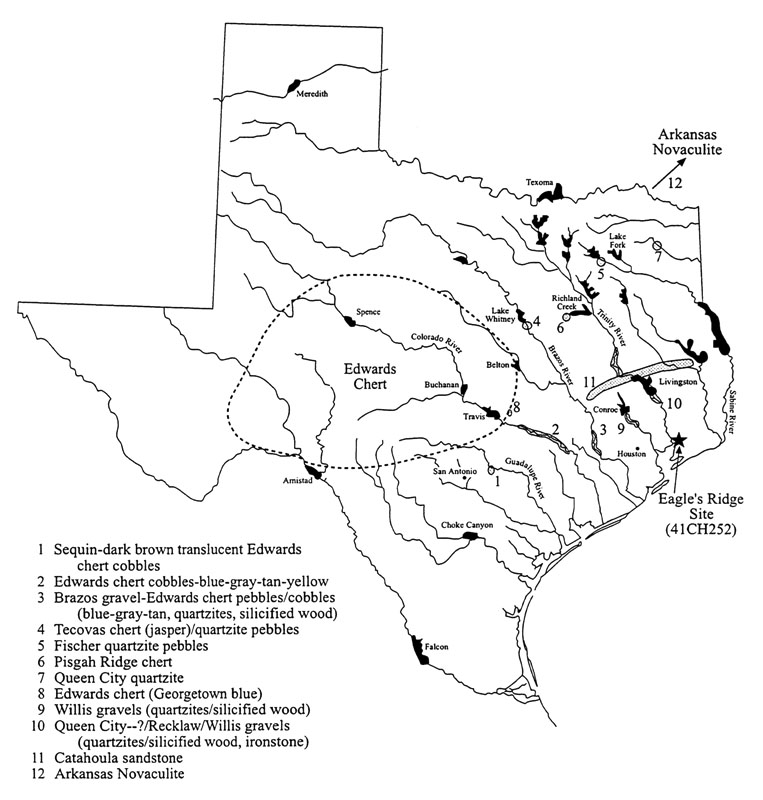
|
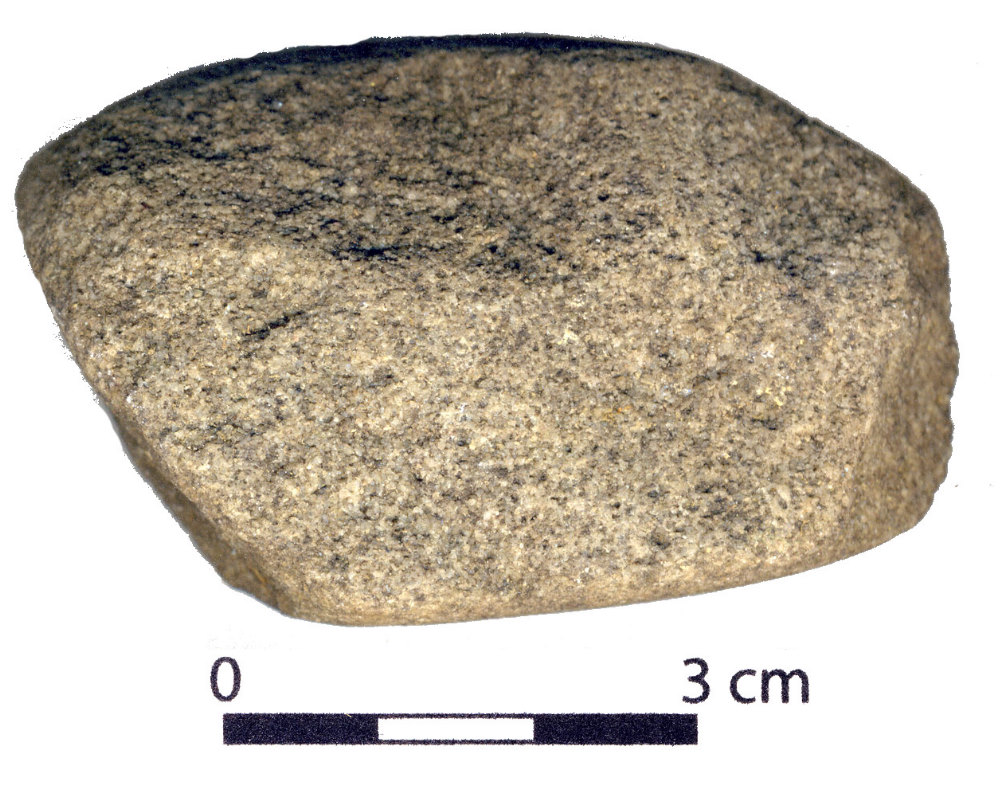
|
